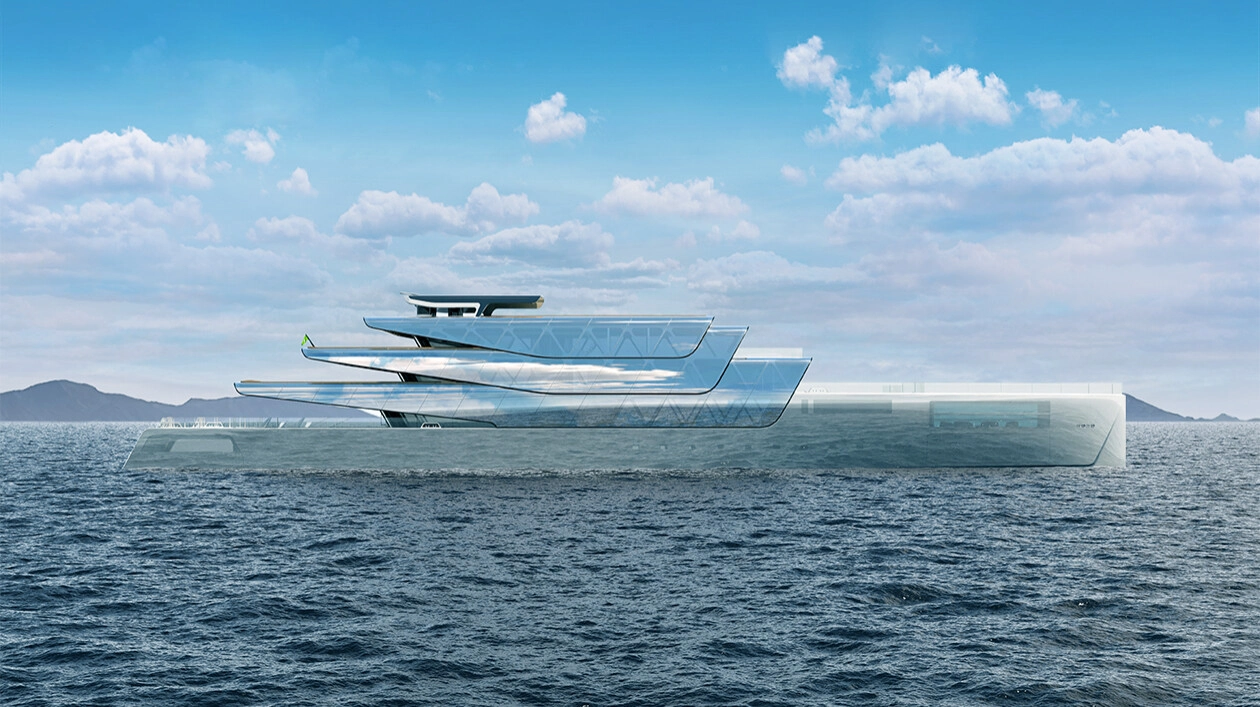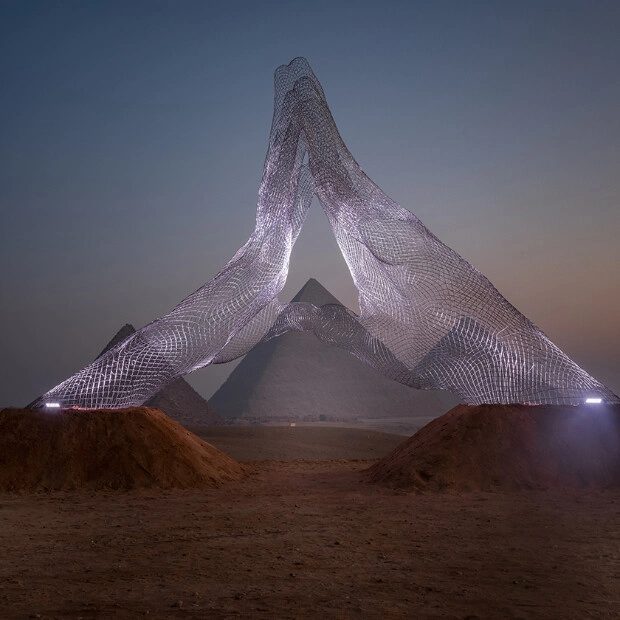International designer Jozeph Forakis, prized for his innovative designs and dedication to catapulting the market into a new level, has revealed the world’s first 3D-printed concept superyacht.
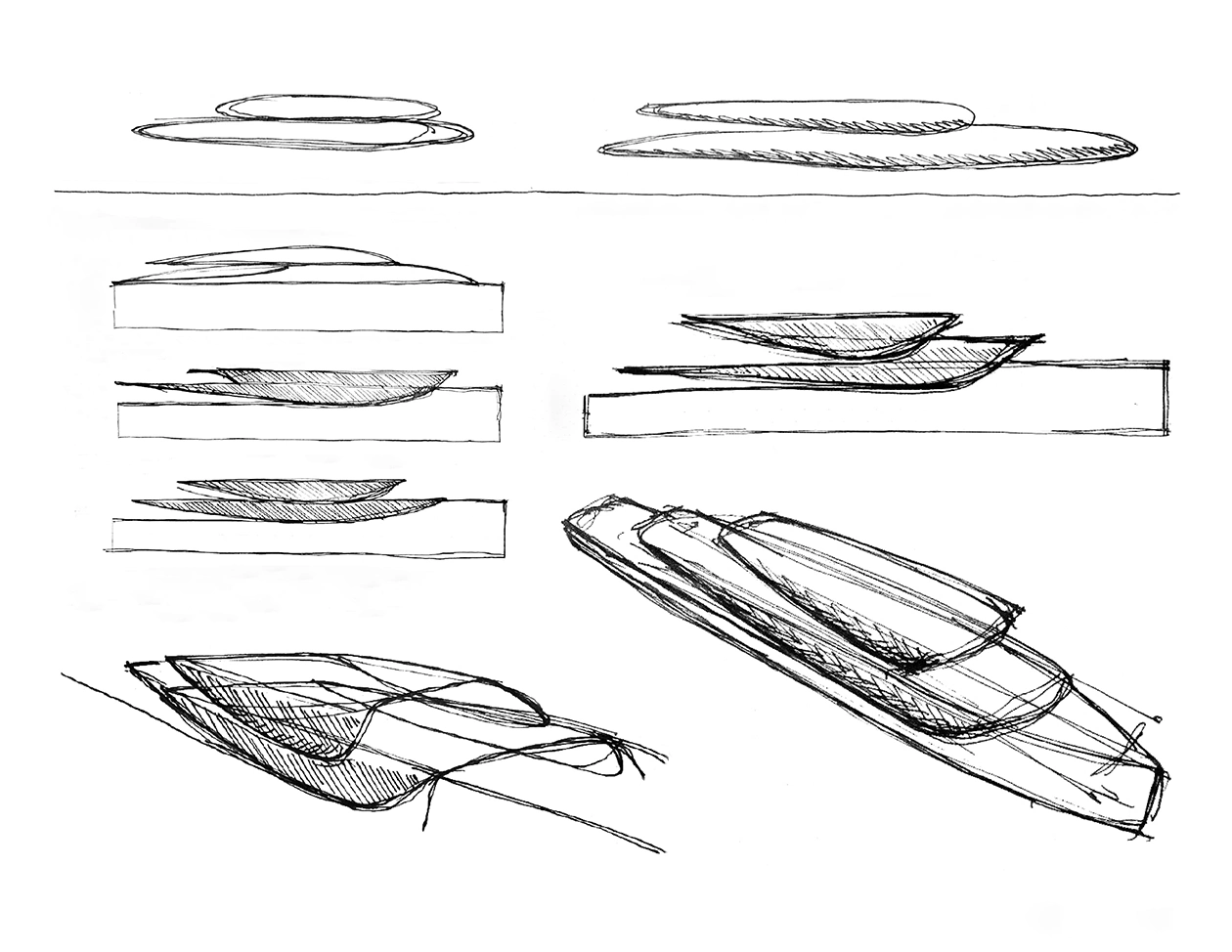
Inspired by the idea of honouring nature, he decided to create a ‘virtually invisible’ superyacht that would be as close to the sea as possible, almost melting with the surrounding nature as if made of ‘clouds floating above the waterline’. So, the 88-metre vessel - The Pegasus - is, indeed, practically invisible both in terms of design and zero-emission environmental impact.
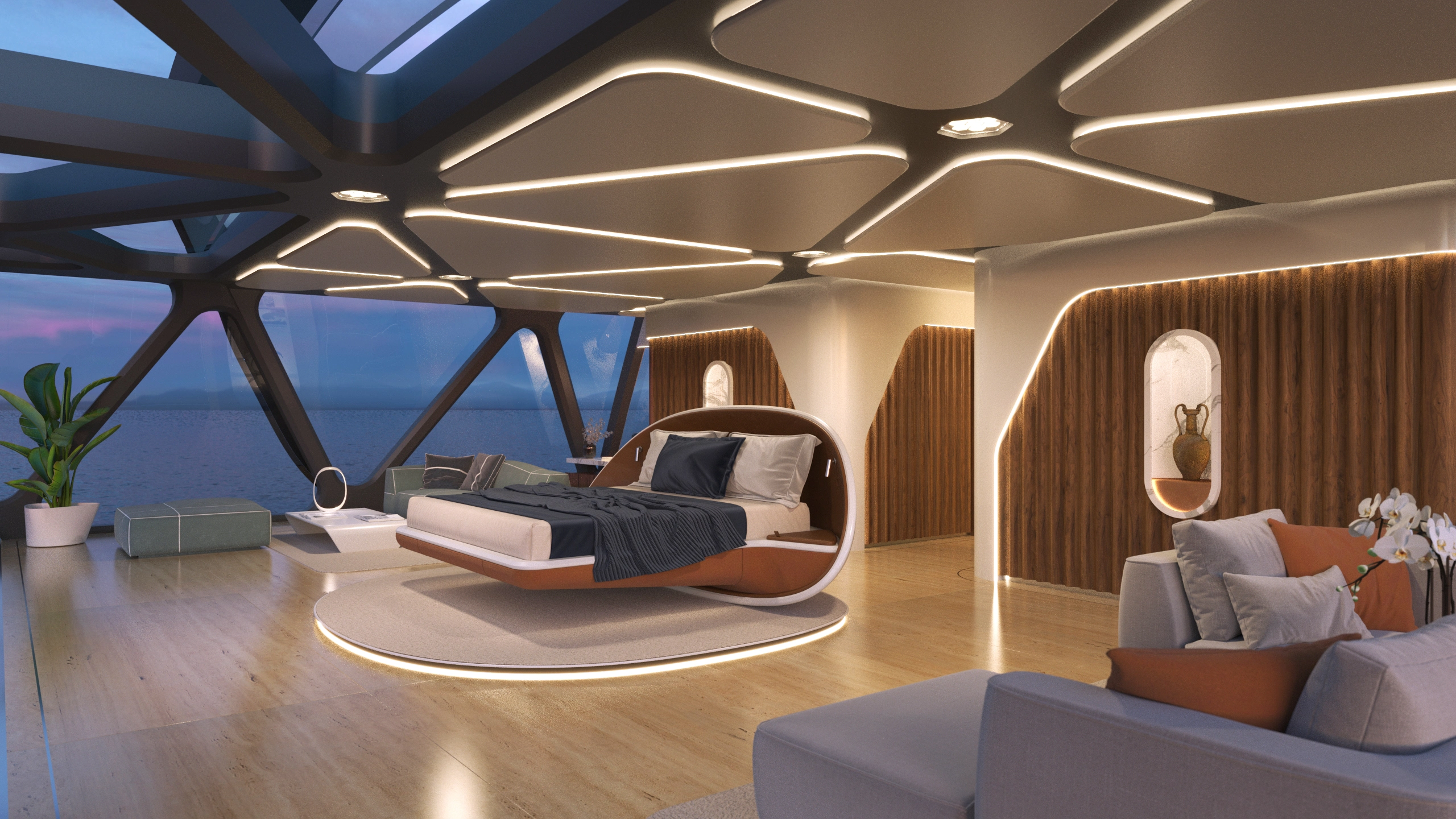 The top level, designed exclusively for the owner, features a spacious forward-facing primary suite, complete with a sizable private terrace
The top level, designed exclusively for the owner, features a spacious forward-facing primary suite, complete with a sizable private terraceThe yacht’s spacious guest lounges showcase a harmonious balance of minimalist design and nature - rich decour and greenery inside, endless panoramic views in all directions outside, with plenty of daylight penetrating to the core.
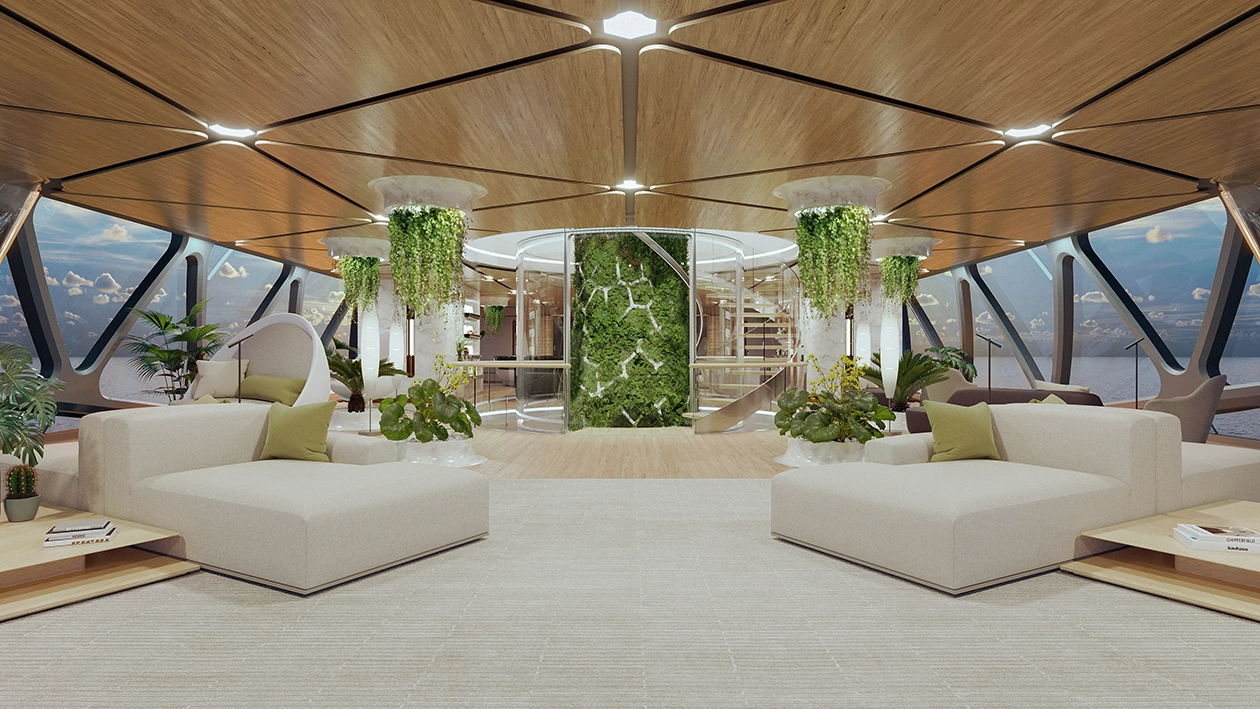
The superyacht’s mesh framework - the hull and the superstructure - is built by means of the robot-assisted 3D printing technology, resulting is a strong and lightweight structure, requiring substantially fewer resources for its production, the inside mesh framework visible under certain lighting conditions.
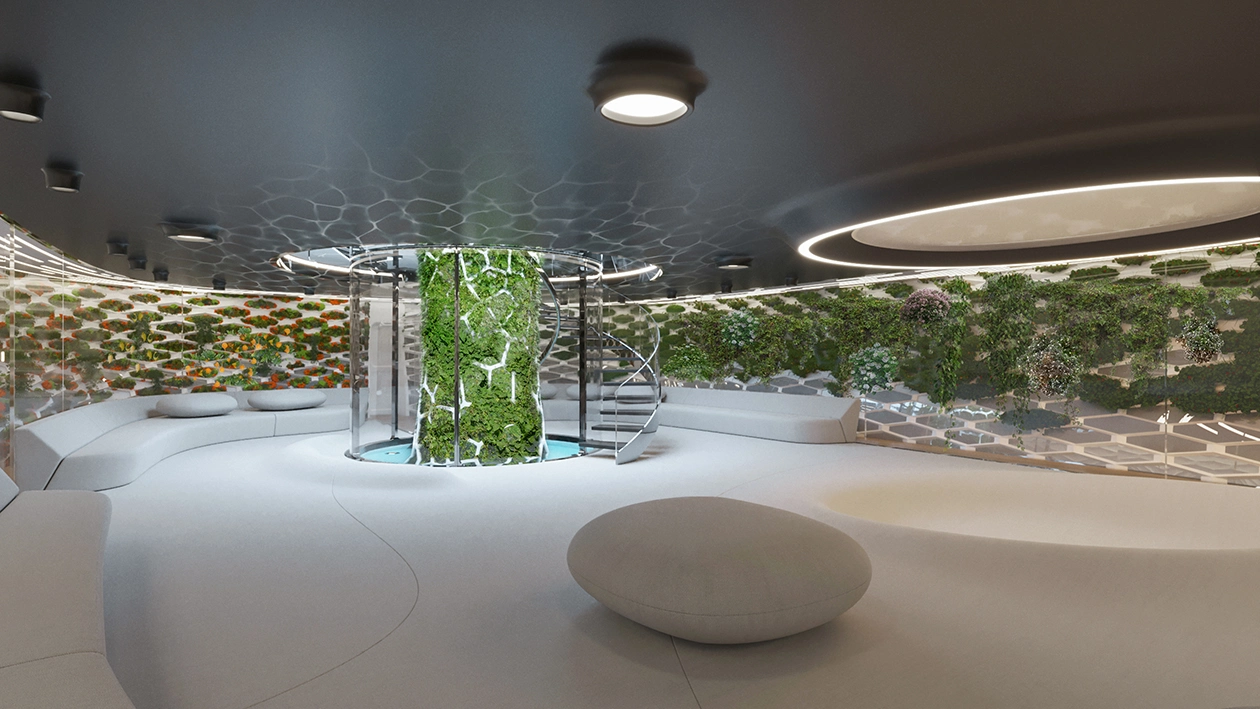 The centerpiece of the yacht’s futuristic interior design is ‘The Tree of Life’ - a multi-level garden installation, featuring live plants, expanding vertically through the yacht’s all four levels, providing air purification and fresh fruit. On the lower deck, at The Tree’s roots, there’s also The Reflective Pool and The Meditation & Wellness Zen Garden, a sculpturesque spiral staircase, wrapping around The Tree, leading upstairs.
The centerpiece of the yacht’s futuristic interior design is ‘The Tree of Life’ - a multi-level garden installation, featuring live plants, expanding vertically through the yacht’s all four levels, providing air purification and fresh fruit. On the lower deck, at The Tree’s roots, there’s also The Reflective Pool and The Meditation & Wellness Zen Garden, a sculpturesque spiral staircase, wrapping around The Tree, leading upstairs.
Using the seawater-to-hydrogen-to-electricity conversion technology, The Pegasus has practically an unlimited cruising range, running entirely on solar energy and producing zero-carbon emissions.
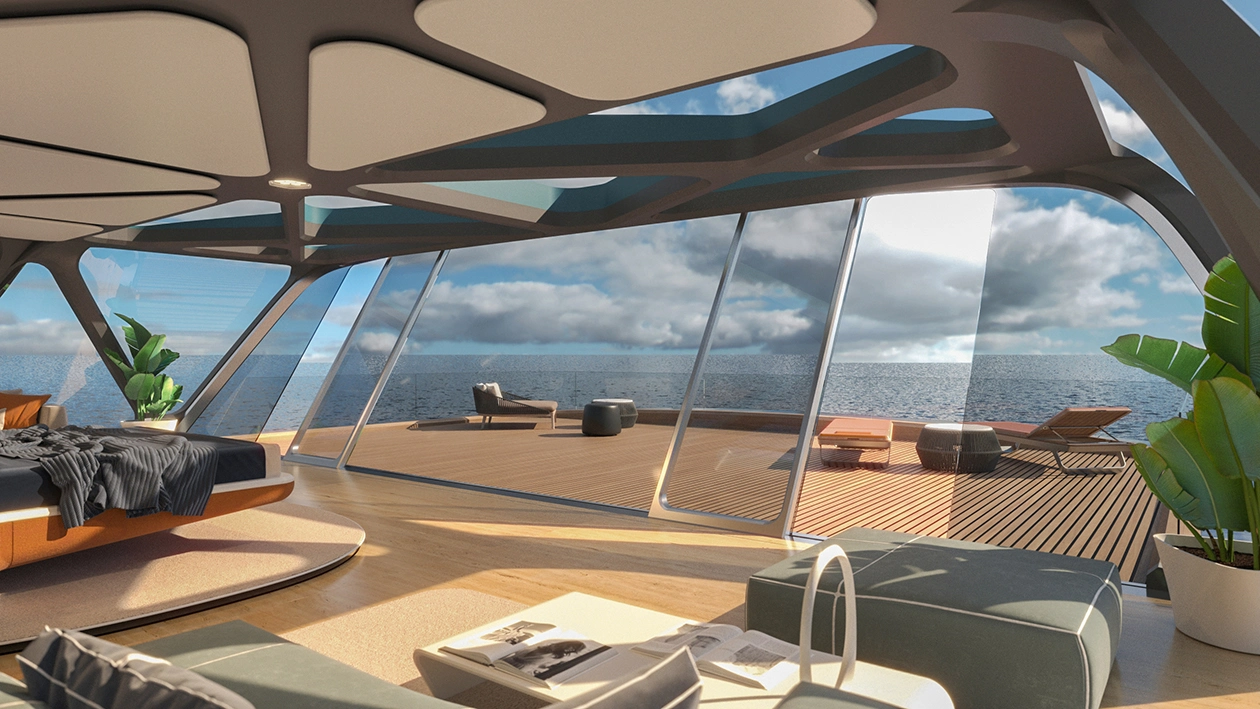 The foremost deck has an aquarium-style lap pool with wide horizontal windows, transforming into open-air balconies both on starboard and larboard, its versatile cover serving as a helipad. The stern features an open-air beach club, complete with a huge Jacuzzi and folding balconies, transforming into an enclosed solarium with sliding glass panels across the ceiling and down the transom bulkhead
The foremost deck has an aquarium-style lap pool with wide horizontal windows, transforming into open-air balconies both on starboard and larboard, its versatile cover serving as a helipad. The stern features an open-air beach club, complete with a huge Jacuzzi and folding balconies, transforming into an enclosed solarium with sliding glass panels across the ceiling and down the transom bulkhead
Jozeph Forakis is sure it’s time we should have enough courage to make a leap toward a sustainable future. The Pegasus is a bold yet achievable vision of the superyacht industry’s near future, in which man and machines will live in harmony with nature instead of competing or temporising with it.
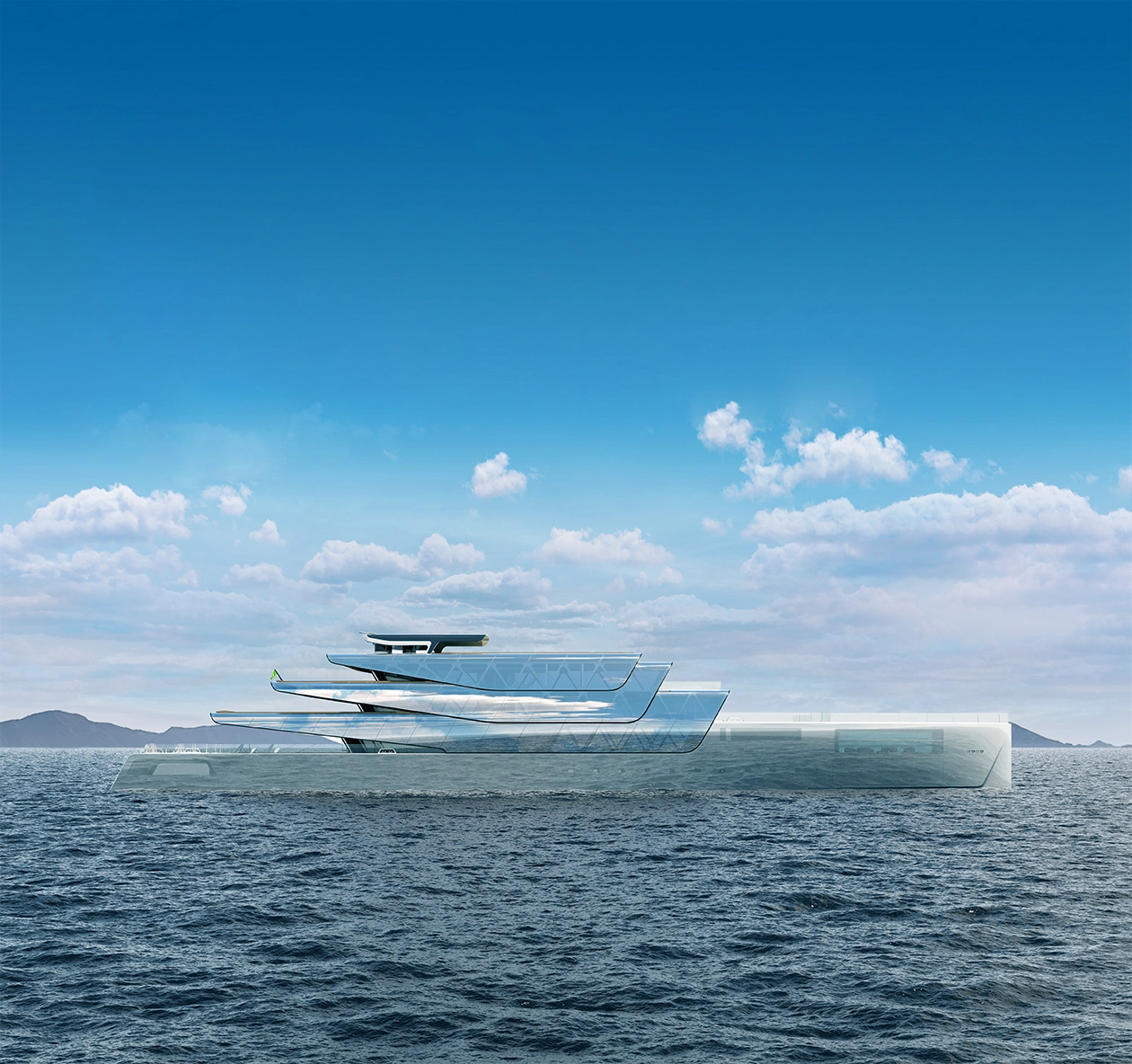 Features Solar panels generate electricity for sea-water Desalination, Deionisation & Electrolisers. H2 stored in high-pressure tanks (H2 storage as long term energy source) Electricity stored in li-ion batteries (Li-ion batteries as a short term energy source) Final Electrical Output For: Drive systems (Azimuth Pod + Bow Thruster) Electrolyzers extract H2 from sea-water Fuel cells converts H2 to electricity The Power management system controls energy flows Hotel Systems Navigation & Safety System
Features Solar panels generate electricity for sea-water Desalination, Deionisation & Electrolisers. H2 stored in high-pressure tanks (H2 storage as long term energy source) Electricity stored in li-ion batteries (Li-ion batteries as a short term energy source) Final Electrical Output For: Drive systems (Azimuth Pod + Bow Thruster) Electrolyzers extract H2 from sea-water Fuel cells converts H2 to electricity The Power management system controls energy flows Hotel Systems Navigation & Safety System